Photography 2009: Favourite Books | reviews, news & interviews
Photography 2009: Favourite Books
Photography 2009: Favourite Books
Despite digital and e-books, the pleasures of a big picture book endure
First, some regretted omissions: the National Portrait Gallery’s Beatles to Bowie exists thanks to intensive sleuthing for an exhibition about the photographic representations of Sixties pop (every exhibited image is represented in the book); Gerhard Richter’s Over-painted Photographs are lyrical reinventions straddling the two media; Jim Goldberg’s Open See (Photographers Gallery, London, until 31 January), differently defaces and over-paints, this time, as documentaries of the broken lives of economic and political migrants in Europe; Linda Gordon’s extensive biography, A Life beyond Limits: Dorothea Lange shadows Lange’s iconic documentary of America’s Great Depression; William Eggleston, the father of colour photography, turns his unmistakeable eye on Paris, the book in advance of Victoria Miró's exhibition in London, N1 in January; Thomas Ruff’s eponymous jpegs will doubtless set a trend. And finally, Sally Mann’s lyrical photo-essay of her husband’s failing body, which she tenderly titles Proud Flesh.
My list exists in a time of change marking the end of an era. The book is dead; long live the e-book which is silently creeping into our vocabulary and vision. I reluctantly accept it but reserve a blind spot for photography books; the evidence of their survival prospects is there in the profusion of titles, book sales and activity amongst established and pop-up publishers. I felt justified by the heaving crowds at the Whitechapel Gallery Photography Book Fair last autumn, when queues snaked around corridors and the crammed stalls resembled a jumble sale: proof that a well-produced book of photographs is as much an art object as the images it contains.
But unlike the still wavering life-span of the traditional book, one area of photography has already passed beyond its death-sentence and entered its after-life. On 09/10/09, Polaroid film’s expiry date arrived, and only savvy professionals, such as film-maker and Polaroid fanatic John Waters, have stockpiles. With its disappearance goes a uniquely creative strand of photography history. Replaced by digital, it lacks the unique colours which emerged from those moist sheets, and kills off the visual notebooks essential in decades of fashion shots. For art photographers like Warhol, a Polaroid was the finished photograph, not a rehearsal throwaway. Two London galleries, Pump House and Atlas (whose show continues until 14 January), mourned its demise in exhibitions illustrating the range of possibilities and included the last works of André Kertesz, lustrous abstracts composed in his Paris apartment.
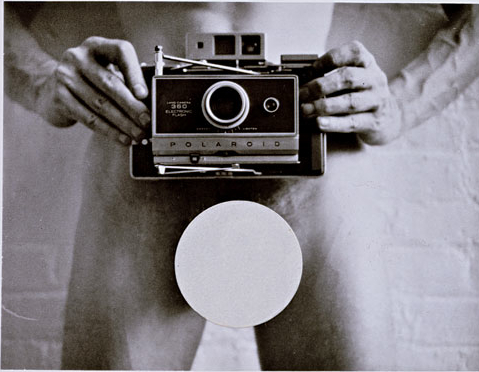 A powerful reminder of Polaroid’s disappearance is marked, ironically, by a book. The re-issued Polaroids: Mapplethorpe which this autumn was accompanied a substantial exhibition at Alison Jacques Gallery, W1, actually emerged just before this year). It represents a precious archive of early-Seventies explorations when his Polaroid notebook liberated his developing ideas and let him loose on now familiar self-portraits and those of friends, flowers and mundane domestic objects, and the audacious homoerotica which shifted boundaries. For Mapplethorpe, says Sylvia Wolf, author of the book, “[the Polaroid’s] instant nature was incredibly important; you can see that he was learning how to expose, how to compose… and too impatient to wait for a lab.” Find Mapplethorpe: Polaroids on Amazon
A powerful reminder of Polaroid’s disappearance is marked, ironically, by a book. The re-issued Polaroids: Mapplethorpe which this autumn was accompanied a substantial exhibition at Alison Jacques Gallery, W1, actually emerged just before this year). It represents a precious archive of early-Seventies explorations when his Polaroid notebook liberated his developing ideas and let him loose on now familiar self-portraits and those of friends, flowers and mundane domestic objects, and the audacious homoerotica which shifted boundaries. For Mapplethorpe, says Sylvia Wolf, author of the book, “[the Polaroid’s] instant nature was incredibly important; you can see that he was learning how to expose, how to compose… and too impatient to wait for a lab.” Find Mapplethorpe: Polaroids on Amazon
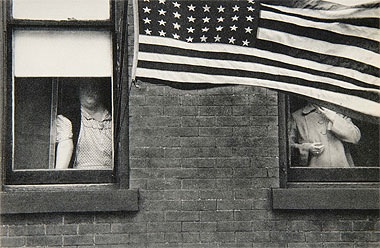 In contrast to the claustrophobia of Mapplethorpe’s Manhattan world, Robert Frank panned the vast American landmass over several years, and produced the epic, still iconic 1950s documentary The Americans which delved under the surface of what constituted that population. Re-issued now as Looking In: The Americans (cover pictured left) by Sarah Greenhough and Stuart Alexander, it remains a marvellous, almost cinematic show, defining the descriptive style he created and now familiar from almost every social documenter since. I recommend the hard-back because it includes the contact significant print sheets which expose his method of shooting (seemingly intuitively free-flowing), editing and cropping. Find Looking In: Robert Frank's The Americans on Amazon
In contrast to the claustrophobia of Mapplethorpe’s Manhattan world, Robert Frank panned the vast American landmass over several years, and produced the epic, still iconic 1950s documentary The Americans which delved under the surface of what constituted that population. Re-issued now as Looking In: The Americans (cover pictured left) by Sarah Greenhough and Stuart Alexander, it remains a marvellous, almost cinematic show, defining the descriptive style he created and now familiar from almost every social documenter since. I recommend the hard-back because it includes the contact significant print sheets which expose his method of shooting (seemingly intuitively free-flowing), editing and cropping. Find Looking In: Robert Frank's The Americans on Amazon.
Mapplethorpe’s fellow Polaroid fan, Patti Smith, flew to London to open his exhibition and gave an impromptu performance outside the gallery, silencing the 1,000-strong audience drawn by emails, and paying homage to her former lover (each other's models) and the Polaroid, and reminding us that “The People have the Power” and we must care for the environment.
 Around that time, the Paris-based Pictet Prize, whose 2009 theme was the earth, announced its international winners through the book Earth (www.teNeus.com). A unifying feature was the sublime beauty found (or searched out) in scenes caused by what Kofi Annan describes in his Foreword as “the damage, deliberately or carelessly, we are inflicting on our own environment.” The overall Pictet winner, Nadav Kandar, epitomized that tendency in images which freeze teh human figures in epic, spoiled landscapes, the most surreally beautiful featuring a Chinese family picnicking under a flyover by a polluted river. Find Earth (Prix Pictet 2009) on Amazon
Around that time, the Paris-based Pictet Prize, whose 2009 theme was the earth, announced its international winners through the book Earth (www.teNeus.com). A unifying feature was the sublime beauty found (or searched out) in scenes caused by what Kofi Annan describes in his Foreword as “the damage, deliberately or carelessly, we are inflicting on our own environment.” The overall Pictet winner, Nadav Kandar, epitomized that tendency in images which freeze teh human figures in epic, spoiled landscapes, the most surreally beautiful featuring a Chinese family picnicking under a flyover by a polluted river. Find Earth (Prix Pictet 2009) on Amazon
In their different ways, environmental issues thread through several of the year’s books. A small-scale cluster includes Andrew Buurman’s Allotments which hits the zeitgeist with sensitive portraits exuding the enthusiasm associated with the communal allotment life. Find Allotments on Amazon
In former Eastern Germany, Emily Andersen, a London photographer usually associated with portraits, also documented allotments in her book titled paradise lost & found (cover picture below). She explores the universal appropriation of empty spaces and how people create their own "secret paradises" in sites ignored by passing road and rail travellers. She seeks beauty but not romance in these gardens and in abandoned rundown factories, "leftovers from socialism’s utopian dream." Find Paradise Lost and Found on Amazon
 Infusing a poetic sensibility into his landscapes, the Devon-based countryman, Jem Southam’s Clouds Descending was a collaboration with writers and friends on walks on the Cumbrian coast, sometimes in the footsteps of the painter L S Lowry. Southam’s frequent presence in the scenes and his inclusion of bird-watching charts and descriptive texts, expand the book’s dimensions and subtly impresses on the reader the preciousness of landscapes beyond the actual view. Find Clouds Descending on Amazon
Infusing a poetic sensibility into his landscapes, the Devon-based countryman, Jem Southam’s Clouds Descending was a collaboration with writers and friends on walks on the Cumbrian coast, sometimes in the footsteps of the painter L S Lowry. Southam’s frequent presence in the scenes and his inclusion of bird-watching charts and descriptive texts, expand the book’s dimensions and subtly impresses on the reader the preciousness of landscapes beyond the actual view. Find Clouds Descending on Amazon
Pulling the focus far back, Brighton photographer Simon Roberts presents the results of a two-year road journey around England, in the exhibition and book titled We English. His large format colour prints of epic scenes resonate with blurry memories of classical landscape paintings, but are actually built around the theme of the English at leisure today (and bear no relation to Martin Parr's now world famous close-up, colour-drenched probing of similar subjects). Roberts' anonymous people are scattered in what resemble staged tableaux, around beaches, fields and golf courses,and they possess a surprising calm. Mostly distant, the people appear to inhabit a landscape of infinite space unrecognisable in our overcrowded land. Find We English on Amazon
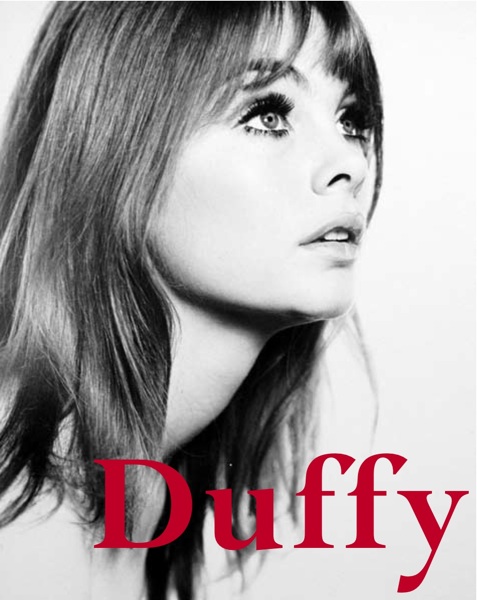 Returning to Swinging Sixties London, the elusive photographer Brian Duffy, third member of “The Black Trinity” with David Bailey and Terence Donovan, reappeared after vanishing in 1979 when he made a pyre of negatives. A recent exhibition led to this small welcoming book, Duffy (www.chrisbeetles.com), which relocates him in Sixties history and highlights his personal take on celebrity portraiture (from John Lennon to Sammy Davis Junior and the Kray twins). What separates Duffy from the others is his experimental approach to advertising shoots (in cool, pre-Mod, "Madman" mode), and the obvious cinematic influences which pervades his work and also suggest Russian Constructivist lighting and geometry.
Returning to Swinging Sixties London, the elusive photographer Brian Duffy, third member of “The Black Trinity” with David Bailey and Terence Donovan, reappeared after vanishing in 1979 when he made a pyre of negatives. A recent exhibition led to this small welcoming book, Duffy (www.chrisbeetles.com), which relocates him in Sixties history and highlights his personal take on celebrity portraiture (from John Lennon to Sammy Davis Junior and the Kray twins). What separates Duffy from the others is his experimental approach to advertising shoots (in cool, pre-Mod, "Madman" mode), and the obvious cinematic influences which pervades his work and also suggest Russian Constructivist lighting and geometry.
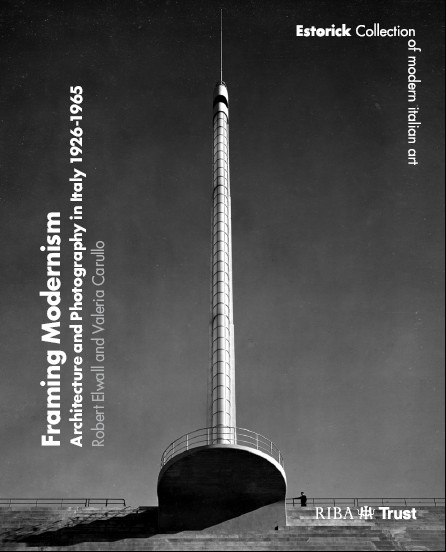 One of the most alluring and little-known London galleries is the Estorick Collection in Islington. Their 2009 exhibition of 100 images from the RIBA (Royal Institute of British Architects) Photography Collection, illustrated Italian Modernist architecture under the title Framing Modernism: Architecture and Photography in Italy, 1926-1965 (www.estorickcollection.com). Schools, private houses, railway stations, factories and swimming pools were models of cool elegance with sensual geometry and plastic curves constructed with concrete. But the collection also included the starker, more austere but not always unattractive geometry of Mussolini-directed communal architecture which matched his social policies. Photographed with large format plate cameras, these photographs rely for their beauty and perfection on the anonymous printers who perfected the intense contrasts in lighting and shadows which epitomise the era.
One of the most alluring and little-known London galleries is the Estorick Collection in Islington. Their 2009 exhibition of 100 images from the RIBA (Royal Institute of British Architects) Photography Collection, illustrated Italian Modernist architecture under the title Framing Modernism: Architecture and Photography in Italy, 1926-1965 (www.estorickcollection.com). Schools, private houses, railway stations, factories and swimming pools were models of cool elegance with sensual geometry and plastic curves constructed with concrete. But the collection also included the starker, more austere but not always unattractive geometry of Mussolini-directed communal architecture which matched his social policies. Photographed with large format plate cameras, these photographs rely for their beauty and perfection on the anonymous printers who perfected the intense contrasts in lighting and shadows which epitomise the era.
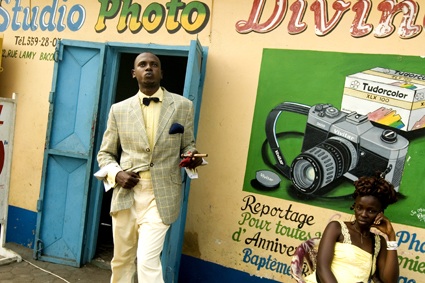 A highlight of 2009 has been the pop-up phenomeon which included a three-day exhibition of portraits by Italian photographer Daniele Tamagni. the event introduced his highly publicized book Gentlemen of Bacongo (Trolley Books) which includes a foreword by Paul Smith who used the image of the man in the pink suit as the motif for his 40th anniversary London Fashion Week show. The eponymous Gentlemen, self-appointed "sapeurs" who pose and flaunt and spend fortunes on their outfits in the poverty-riddled Congo, newly emergent from war, is a fascinating story. Tamagni's gorgeous portraits collude with these tropical dandies (who often sport white shoes on dusty streets), photographing them at home, planning the day's outfit, or strolling through their Brazzaville neighbourhood (Bacongo) in customized, tailored outfits which subvert and sabotage Western formal dress (hunting jackets with white jeans, plus fours with gaudy African prints, and always a tie, a handkerchief and a cigar). The photographs glow and dazzle, take inspiration for Malick Sidibe's Malian studio work in the Sixties, and reveal untrained outfitters whose intuitive sense of design and use of colour collisions excited Paul Smith. Only their lack of education depirives them from developing careers in fashion - unless they moved to Europe. And that's a story in the wings. Find Gentlemen of Bacongo on Amazon
A highlight of 2009 has been the pop-up phenomeon which included a three-day exhibition of portraits by Italian photographer Daniele Tamagni. the event introduced his highly publicized book Gentlemen of Bacongo (Trolley Books) which includes a foreword by Paul Smith who used the image of the man in the pink suit as the motif for his 40th anniversary London Fashion Week show. The eponymous Gentlemen, self-appointed "sapeurs" who pose and flaunt and spend fortunes on their outfits in the poverty-riddled Congo, newly emergent from war, is a fascinating story. Tamagni's gorgeous portraits collude with these tropical dandies (who often sport white shoes on dusty streets), photographing them at home, planning the day's outfit, or strolling through their Brazzaville neighbourhood (Bacongo) in customized, tailored outfits which subvert and sabotage Western formal dress (hunting jackets with white jeans, plus fours with gaudy African prints, and always a tie, a handkerchief and a cigar). The photographs glow and dazzle, take inspiration for Malick Sidibe's Malian studio work in the Sixties, and reveal untrained outfitters whose intuitive sense of design and use of colour collisions excited Paul Smith. Only their lack of education depirives them from developing careers in fashion - unless they moved to Europe. And that's a story in the wings. Find Gentlemen of Bacongo on Amazon
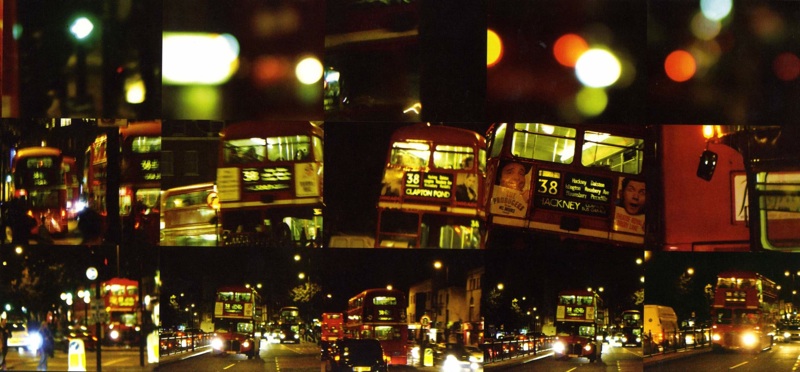
I'll close my list at the luxury end of the range, with the composer Michael Nyman's entree into the photographic universe this year. His compelling exhibition of film and photography at Bexhill’s de la Warr Pavilion has been preserved through a souvenir black box as meticulously hand-produced as a Minimialist sapeur's outfits. Lined with black tissue paper, it contains a numbered piano key, and beautifully laid out book titled SUBLIME (limited edition from www.mnrecords.com) after an image taken of a man inserting letters to create a title outside a cinema. Any suspicion that Nyman may be bored with composing or playing music should be banished: the themed projects reflect a startling eye and a boundless curiosity about people: most images are voyeuristically achieved street photographs taken as he travels the world's cities where he performs. Not surprisingly, they reveal an exceptional sense of composition and rhythmicity, qualities not always applied even byleading photographers. Find Sublime on Amazon
As we lope towards the New Year, expect more innovatively curated exhibitions, more photography books, festivals and surprising directions. We could continue to lament the death of the Polaroid but the future points to expanding, dynamic internationalism, new names, new approaches, new subjects - and surprising re-interpretations of the functions and processes of photography. Retro and classic will always have their place, and the new vogue for looking back to pioneering 19th-century techniques and chemical processing will probably spread, but be balanced by the majority immersion in ever deeper digital realms.
The challenging shrinkage of the print media already affects commercial photography, and the universality of amateur image-making both threatens and influences the professionals. It will play an increasing role in wars and disasters, but it also holds the potential for the kind of agitprop currently being practised by the Iranian protesters photographing each other online wearing hijabs - and causing as much anxiety as a wasp inside a turban.
more Visual arts
 Eye to Eye: Homage to Ernst Scheidegger, MASI Lugano review - era-defining artist portraits
One of Switzerland's greatest photographers celebrated with a major retrospective
Eye to Eye: Homage to Ernst Scheidegger, MASI Lugano review - era-defining artist portraits
One of Switzerland's greatest photographers celebrated with a major retrospective
 Stephen review - a breathtakingly good first feature by a multi-media artist
Melanie Manchot's debut is strikingly intelligent and compelling
Stephen review - a breathtakingly good first feature by a multi-media artist
Melanie Manchot's debut is strikingly intelligent and compelling
 Fantastic Machine review - photography's story from one camera to 45 billion
Love it or hate it, the photographic image has ensnared us all
Fantastic Machine review - photography's story from one camera to 45 billion
Love it or hate it, the photographic image has ensnared us all
 Yinka Shonibare: Suspended States, Serpentine Gallery review - pure delight
Weighty subject matter treated with the lightest of touch
Yinka Shonibare: Suspended States, Serpentine Gallery review - pure delight
Weighty subject matter treated with the lightest of touch
 Jane Harris: Ellipse, Frac Nouvelle-Aquitaine MÉCA, Bordeaux review - ovals to the fore
Persistence and conviction in the works of the late English painter
Jane Harris: Ellipse, Frac Nouvelle-Aquitaine MÉCA, Bordeaux review - ovals to the fore
Persistence and conviction in the works of the late English painter
 Sargent and Fashion, Tate Britain review - portraiture as a performance
London’s elite posing dressed up to the nines
Sargent and Fashion, Tate Britain review - portraiture as a performance
London’s elite posing dressed up to the nines
 Zineb Sedira: Dreams Have No Titles, Whitechapel Gallery review - a disorientating mix of fact and fiction
An exhibition that begs the question 'What and where is home?'
Zineb Sedira: Dreams Have No Titles, Whitechapel Gallery review - a disorientating mix of fact and fiction
An exhibition that begs the question 'What and where is home?'
 Yoko Ono: Music of the Mind, Tate Modern review - a fitting celebration of the early years
Acknowledgement as a major avant garde artist comes at 90
Yoko Ono: Music of the Mind, Tate Modern review - a fitting celebration of the early years
Acknowledgement as a major avant garde artist comes at 90
 Unravel: The Power and Politics of Textiles in Art, Barbican review - the fabric of dissent
An ambitious exploration of a neglected medium
Unravel: The Power and Politics of Textiles in Art, Barbican review - the fabric of dissent
An ambitious exploration of a neglected medium
 When Forms Come Alive, Hayward Gallery review - how to reduce good art to family fun
Seriously good sculptures presented as little more than playthings or jokes
When Forms Come Alive, Hayward Gallery review - how to reduce good art to family fun
Seriously good sculptures presented as little more than playthings or jokes
 Entangled Pasts 1768-now, Royal Academy review - an institution exploring its racist past
After a long, slow journey from invisibility to agency, black people finally get a look in
Entangled Pasts 1768-now, Royal Academy review - an institution exploring its racist past
After a long, slow journey from invisibility to agency, black people finally get a look in
 Barbara Kruger, Serpentine Gallery review - clever, funny and chilling installations
Exploring the lies, deceptions and hyperbole used to cajole, bully and manipulate us
Barbara Kruger, Serpentine Gallery review - clever, funny and chilling installations
Exploring the lies, deceptions and hyperbole used to cajole, bully and manipulate us

Add comment